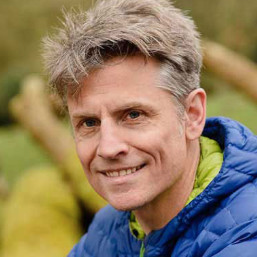On a calm, cold afternoon in early March, in Neko Harbour on the west coast of the Antarctic Peninsula, a humpback whale is making a series of moves that – to me, at the time – have no obvious purpose.
First, the humpback raises one of its outsized pectoral fins – which can reach up to 5m in length, longer than a typical estate car – as if asking for permission to speak in class, before diving and resurfacing. Then it raises the fin again, carrying on like this for another 15 minutes.
Chris Johnson, oceans science manager for WWF-Australia, is watching from a nearby boat and releases a drone equipped with a video camera. The footage transforms what appears from sea level to be a set of random exercises into a stunning performance as choreographed as any ballet.
As it turns out, the pectoral fin is being used as a rudder to steer the humpback in a tight circle while it blows a ring of bubbles. Once that’s done, it dives down and then surges up through the middle of the ring, engulfing the bounty corralled by the bubbles in its cavernous mouth. The whale is bubble-net feeding for krill, its primary food source in Antarctica.
Dr Ari Friedlaender, professor of ocean sciences at the University of California, Santa Cruz, is also aboard the boat and has seen this behaviour many times before. Nevertheless, the perspective provided by the drone offers exciting new insights.
“I knew it was making bubble nets, but what I couldn’t tell – without the help of the drone – was how small and tight that net was,” he tells me later. “That bubble net was smaller than the whale was long purely because it could pivot around its flipper and you can see that in the video quite clearly.”
Follow the food: Krill provide a tasty meal
Whales – including humpbacks, blue, fin, sei and Antarctic minke – migrate south for the Antarctic spring and summer to take advantage of the fecundity of krill that lives there, the largest biomass of any marine species on the planet.
They come because the waters of the tropics, where they mate and give birth, are too warm to produce the vast amounts of krill the whales need (the crustaceans not only prefer colder waters but also rely on the algae that grows beneath the ice sheets for food).
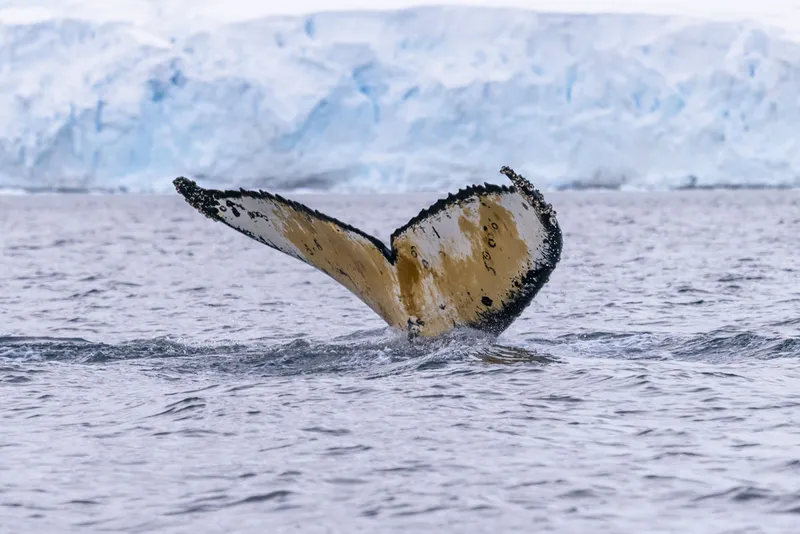
When Friedlaender first came to Antarctica in 1998, his task was to count whales. “I saw five or six,” he says. “The average air temperature was -30˚C but somehow it didn’t put me off. I thought it was the greatest place on Earth.”
Getting up close and personal
He has since written the textbook on how to study whales in the Antarctic and what they do there. It’s an obvious but often forgotten fact that whales are hard to research because they live in water, so Friedlaender has learned to exploit a range of new technologies to gain insights into their lives.
Aside from the drones provided by the WWF, the gadgets at his disposal include suction-cup tags that record everything from a whale’s movements over a 24-hour period to video footage that shows what it’s like to be one. He also has a means of extracting skin and blubber samples to assess a whale’s stress levels and determine whether it’s pregnant.
Read more:
- The bizarre (and pretty gross) science of whale vomit
- Antarctica: the remarkable life that survives the coldest continent
Research of this nature is costly but the most expensive part is getting the scientists and all their equipment to Antarctica (it’s a two-day journey by ship from Ushuaia, at the southern tip of Argentina).
But here Friedlaender and his colleagues have a helping hand – instead of having to fund their own travel for the 2022-23 research season, they’re the guests of an Australian adventure tour company called Intrepid.
Intrepid provides berths and food aboard its ship, the Ocean Endeavour, plus the use of a small inflatable boat. In return, the scientists give updates each evening about their research and why it’s necessary.
Given the reaction at the nightly meetings, it’s a popular addition to the standard talks about penguins and polar explorers. Friedlaender, for his part, welcomes the opportunity to talk to an engaged audience.
“We have metrics for how many people cite our publications and that’s important. But the real impact of the science comes from how many people get the message and change their behaviour and attitudes because of it,” he says.
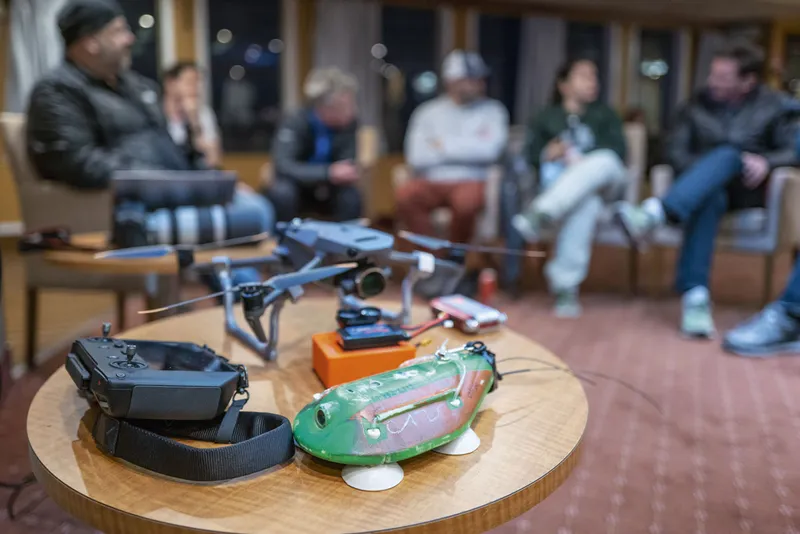
It’s not a new arrangement, and other Antarctica cruise companies, such as Hurtigruten and Waterproof Expeditions, also offer places to whale scientists but Intrepid is the only one that has the backing of the global conservation group WWF.
Spotting trends among whales is important
As the team’s drone pilot, Chris Johnson’s main role is to get simple measurements of the whales’ lengths and widths. Groundbreaking research published in 2020 showed that North Atlantic right whales are much skinnier than their southern right whale cousins.
Indeed, the northern species suffers from a deadly cocktail of human impacts that may be driving it to extinction. While no one thinks the same thing is happening to whales in Antarctica, the idea is to better understand how they’re faring in the medium-to-long term.
“What we’re really interested in is the trend: are whales getting bigger or smaller? And something we’ll look at is how do we take all this information to determine these trends and make it publicly available,” Johnson says.
Could we run out of krill for the whales to feed on?
Whales in the Antarctic feed almost exclusively on Antarctic krill (Euphausia superba), a species of shrimp-like crustacean that, while only 6cm long, lives in astonishingly dense swarms of between 10,000-30,000 animals per m3.
Krill’s biomass was once considered to be so great that it was inexhaustible but today the idea of it as an infinite resource is being questioned.
That’s for two main reasons. The first is climate change. Krill depend on sea ice, underneath which grows the algae that they feed on. The Antarctic is warming faster than any part of the planet and, as sea ice disappears, it’ll restrict the range of the species that are the building block of the Antarctic food chain.
The second reason is that krill is gaining a reputation as a health food supplement, marketed by retailers as being rich in omega-3 fatty acids that are good for your heart, brain and vision. It’s fed to farmed salmon, pumped into pet food and is even being investigated as a ‘super-food’ for the US military.
Conservationists accept that krill is not overexploited. There are some 380 million tonnes of it in the Southern Ocean and the total amount caught by fisheries amounts to just 450,000 tonnes, about 0.1 per cent of what’s theoretically available.
The problem isn’t how much the Southern Ocean super trawlers are catching – not yet, anyway – but where they’re catching it.
“If you look at how the commercial krill fishery works, it overlaps in space and time with the whales [at certain times of year],” says Friedlaender. “You literally have two predators competing for the same resource.”
That this is known is largely thanks to Friedlander’s high-tech, suction-cup tags. Travelling in boats, he and his team patrol the Gerlache Strait on the west coast of the Antarctic Peninsula, looking for humpbacks and minkes.
How scientists tag whales safely
When a whale is sighted, the pilot steers the boat so that it’ll be behind the animal when it surfaces to breathe. As the whale slowly rises, one of the scientists on board extends a long, lance-like pole with a suction-cup tag on the end.
The aim is to be within range (about 5m away) when the whale breaks through the surface of the water, at which point the scientist thrusts the lance forward to stick the tag on to the creature’s back.
If they’re successful, the tag will spend the next 24-48 hours on the whale collecting data about its movements and behaviour, before detaching and transmitting a signal that the scientists can use to find it. Then the real science can begin.
What information can we learn from the data?
“All baleen whales have a very strong kinematic signature,” Friedlaender explains. “There’s a lot of motion that goes into feeding. Their mouths are these massive things that fill with water and when they feed, they accelerate very quickly, open their mouths and then decelerate very quickly as the water fills that volume.”
Accelerometers on the tag record this motion and an on-board processor aggregates the absolute values to create what Friedlaender calls a “jerk signal”.
Video that is recorded at the same time shows the mouth opening and closing, demonstrating that this signal can be absolutely correlated with feeding. Friedlaender has even teamed up with a video games editor to produce a 3D CGI animation of this movement.
This data has revealed that humpbacks will perform up to 800 feeding lunges at the beginning of the Antarctic summer when they first arrive and are, naturally, extremely hungry.
Thanks to a GPS capability, the tags also give precise locations for the whales, so Friedlaender and colleagues are beginning to understand where they’re feeding, when they’re feeding and how much they’re eating.
A new Marine Protected Area
Now, after collecting more than a decade’s worth of data, the scientists know that the Gerlache and Bransfield Straits, and adjacent bays such as Neko Harbour, are the most important areas for baleen whales on the peninsula and some of the most important in Antarctica.
WWF is using this data to press for a new Marine Protected Area (MPA) that covers the Antarctic Peninsula.
In 2002, the Commission for the Conservation of Antarctic Marine Living Resources (CCAMLR), which regulates all fishing activity in the Southern Ocean, committed to establishing a network of MPAs around Antarctica but progress on one for the peninsula, and two others, has stalled.
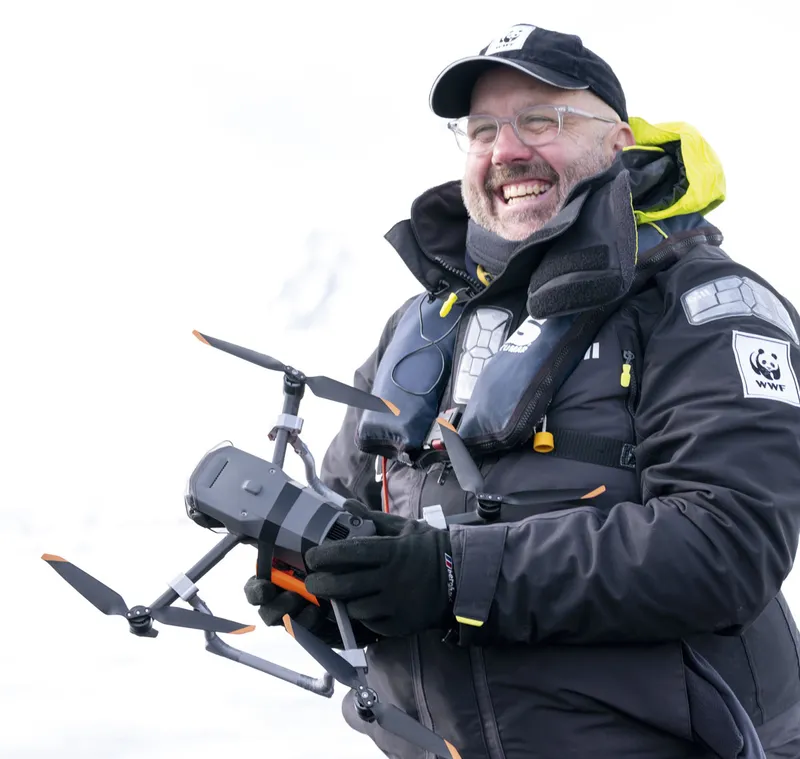
“There are 26 nations, including the European Union, that are members of CCAMLR, and 24 of them are on board with these proposals. Now it’s a question of getting the other two over the line,” Johnson says. “China and Russia – that’s the real challenge.”
Despite the obvious obstacles that stand in the way of making any agreements with these two countries right now, Johnson remains optimistic that it’ll happen eventually, saying it all comes down to timing.
Read more:
- Who really found the continent of Antarctica?
- How to grow food in space: the Antarctic base preparing for human space colonies
Tissue samples can reveal more
During my time with them, Friedlaender and Johnson are joined by a third team member and, in contrast to their high-tech drones and tags, she has come equipped with a crossbow – an invention that dates back 2,500 years. It’s not just any crossbow, though; this one fires modified bolts tipped with metal tubes that extract tissue samples, similar to how a spud gun extracts bullets from a potato.
Standing in the bow of the boat, Natalia Botero-Acosta waits as the pilot approaches a humpback from the rear. It’s many decades since whales were last hunted in Antarctica; nevertheless, it’s hard to ignore the irony of a scientist poised like a harpoonist, even if it is in the name of saving whales, not killing them.
Just as they draw within 10m of the whale, Botero-Acosta fires. She misses but reloads and fires again, hitting the whale on its flank. The bolt bounces back harmlessly, plopping into the cold seawater where it floats on the surface, waiting to be retrieved.
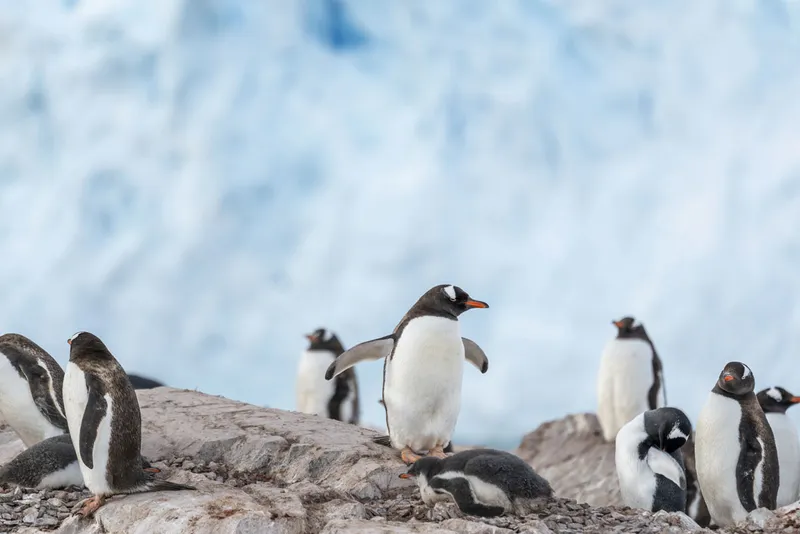
Back on Ocean Endeavour, Botero-Acosta pokes the small sample of skin and blubber collected in the bolt. It resembles a micro-portion of sushi, just a few millimetres in diameter and 2-3cm long.
The sample will be frozen, sent to a lab and tested for progesterone and testosterone to assess whether the whale it came from is a pregnant female or, if it’s a male, whether it’s of breeding age or not.
Tests for cortisol will establish the whale’s stress levels. If these are high, could it be because of the presence of fishing boats – or even tourist ships. Recorded stress levels were lower during the COVID-19 pandemic when no trips ran.
“We’re especially looking for biopsies from females with calves,” Botero-Acosta tells me. Recent research, published by Logan Pallin, one of Friedlander’s postdoc researchers, showed that the rate of females becoming pregnant immediately after giving birth was surprisingly high, averaging more than 50 per cent over an eight-year period.
“That’s really interesting because that happens when a population is recovering and has enough food to do so,” says Botero-Acosta. “You need a lot of energy to do that, because [for much of the year] that female is either migrating or in the tropics, where she’s nursing a calf and not eating.”
But Pallin’s paper also showed high variability and that years of low pregnancy rates could be correlated with years when there had been a low abundance of krill. In other words, if there wasn’t enough food, females were not in sufficiently good condition to get pregnant. It’s another piece in the jigsaw of how Antarctica’s whales are faring and what may affect them in the future.
Why are whale populations important?
There’s a good reason why we should all be concerned about maintaining and even restoring whale populations. Each great whale amasses nearly 30 tonnes of carbon dioxide during its lifetime (a tree, in comparison, sequesters just over 20kg a year) and when it dies, that carbon is usually deposited on the seabed.
Not only that, but whales’ waste products provide essential ingredients for the growth of phytoplankton, tiny marine algae that absorb four times as much carbon as the entire Amazon forest each year. In short, the more whales there are, the more carbon is taken out of the atmosphere.
Back in Melbourne, after the expedition, Chris Johnson is mulling over WWF-Australia’s next move. A special meeting of CCAMLR is taking place in Santiago, Chile, in July, in the hope that progress can be made on designating the three Antarctic MPAs promised more than two decades ago.
He, Friedlaender and Botero-Acosta are doing their bit by collecting valuable data on the whales that rely on the krill in those regions. Now it’s up to politicians and policy-makers to do theirs.
Read more:
- Why African black rhino numbers are increasing
- Do whales sleep?
- How humpback whales communicate through a hidden global network of song
About our experts
Chris Johnson is the global lead on the WWF Protecting Whales & Dolphins Initiative. He has studied whales in 25 different countries, and has a MSc in Environmental Science from Murdoch University (Australia).
Dr Ari Friedlaender is the principal investigator at the Bio-Telemetry and Behavioral Ecology Laboratory. He is associate editor for journal Marine Mammal Science.
Dr Natalia Botero-Acosta has a PhD from the Brain and Behavior program from the University of Southern Mississippi. She has over 13 years of experience studying marine mammals, particularly with humpback whales.
